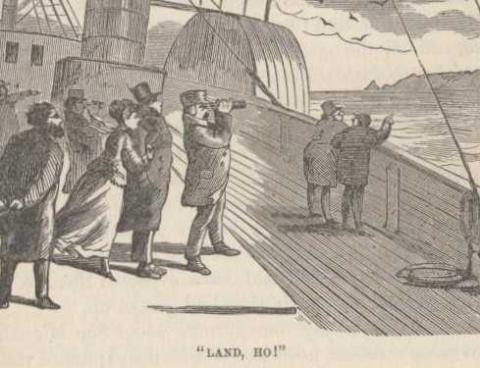Atlantic island group of volcanic origin, located about 740 miles west of Portugal, which has owned the islands since the mid-17th century. The Quaker City was to land at the largest island, San Miguel, but to avoid a storm, it instead anchored at the port of Horta on the island of Fayal on June 21, 1867. After two days... the passengers voted to skip San Miguel and go directly to Gibraltar.
At three o’clock on the morning of the twenty-first of June, we were awakened and notified that the Azores islands were in sight. I said I did not take any interest in islands at three o’clock in the morning. But another persecutor came, and then another and another, and finally believing that the general enthusiasm would permit no one to slumber in peace, I got up and went sleepily on deck. It was five and a half o’clock now, and a raw, blustering morning. The passengers were huddled about the smoke-stacks and fortified behind ventilators, and all were wrapped in wintry costumes and looking sleepy and unhappy in the pitiless gale and the drenching spray. I think the Azores must be very little known in America. Out of our whole ship’s company there was not a solitary individual who knew anything whatever about them. Some of the party, well read concerning most other lands, had no other information about the Azores than that they were a group of nine or ten small islands far out in the Atlantic, something more than halfway between New York and Gibraltar. That was all. The mountains on some of the islands are very high. We sailed along the shore of the island of Pico, under a stately green pyramid that rose up with one unbroken sweep from our very feet to an altitude of 7,613 feet, and thrust its summit above the white clouds like an island adrift in a fog! We got plenty of fresh oranges, lemons, figs, apricots, etc., in these Azores, of course. But I will desist. I am not here to write Patent Office reports. We are on our way to Gibraltar, and shall reach there five or six days out from the Azores.
From Page 408-9 The Life of Mark Twain: The Early Years, 1835-1871:
